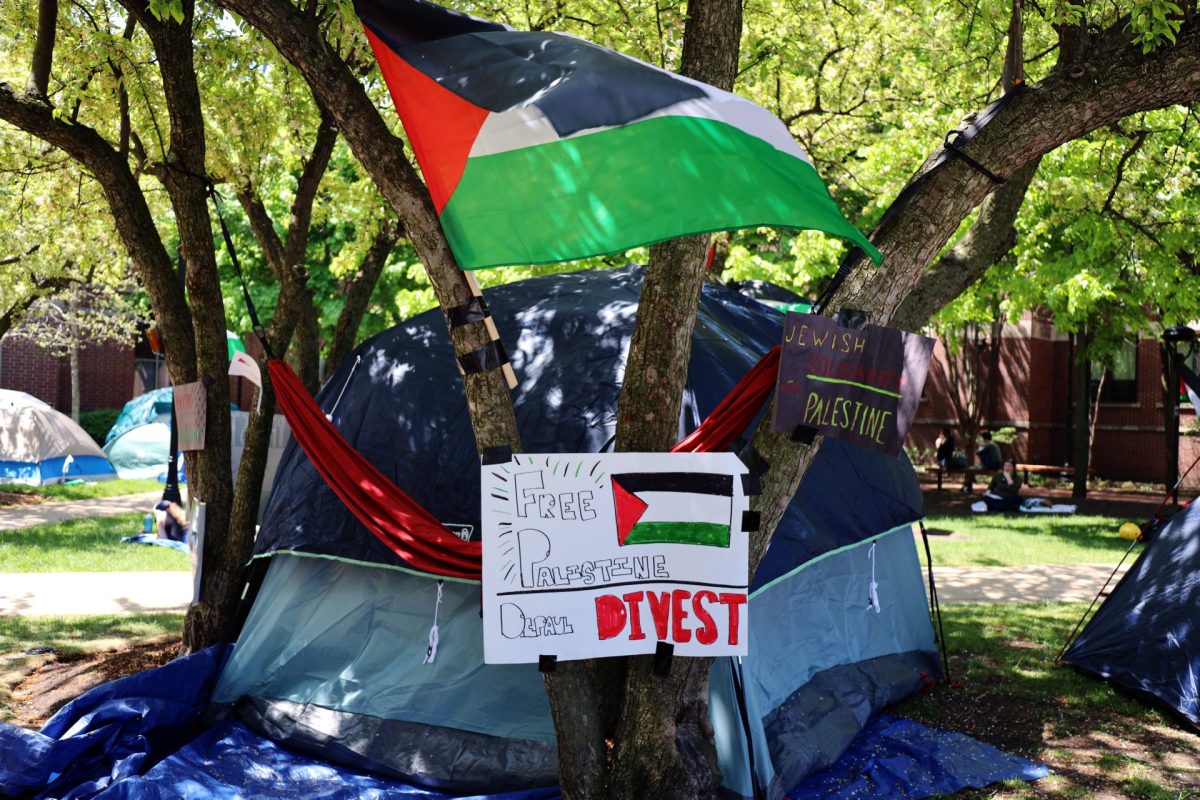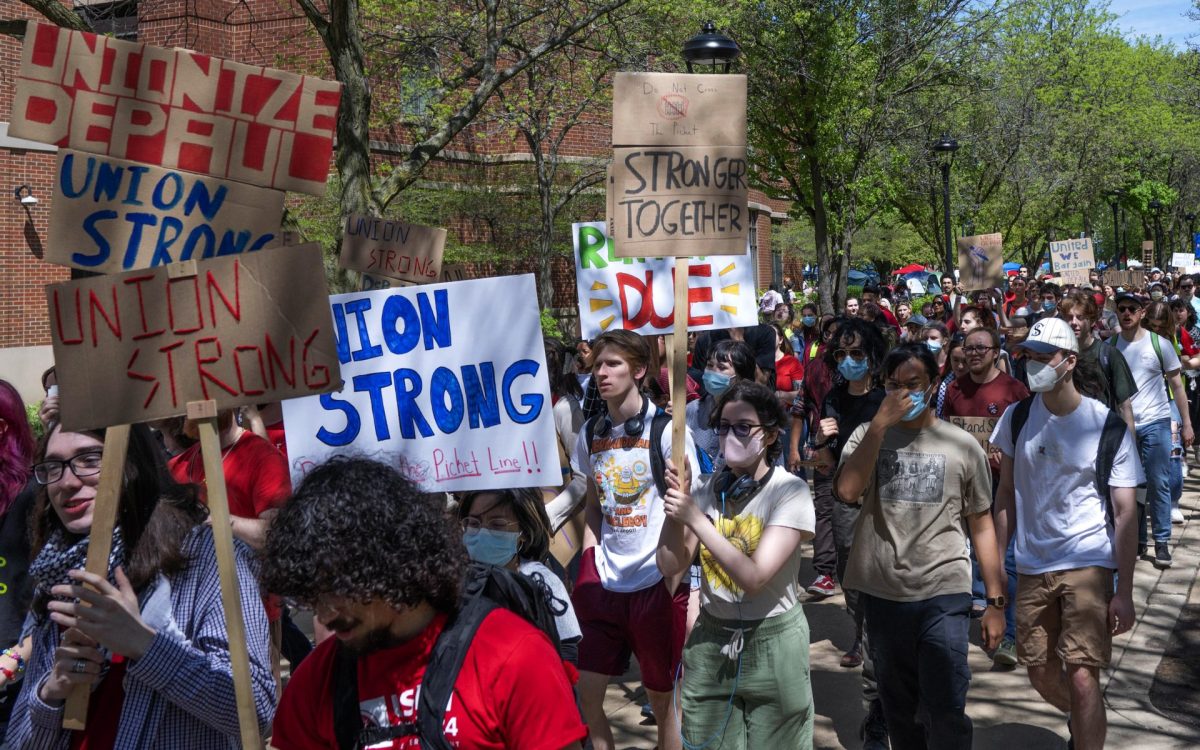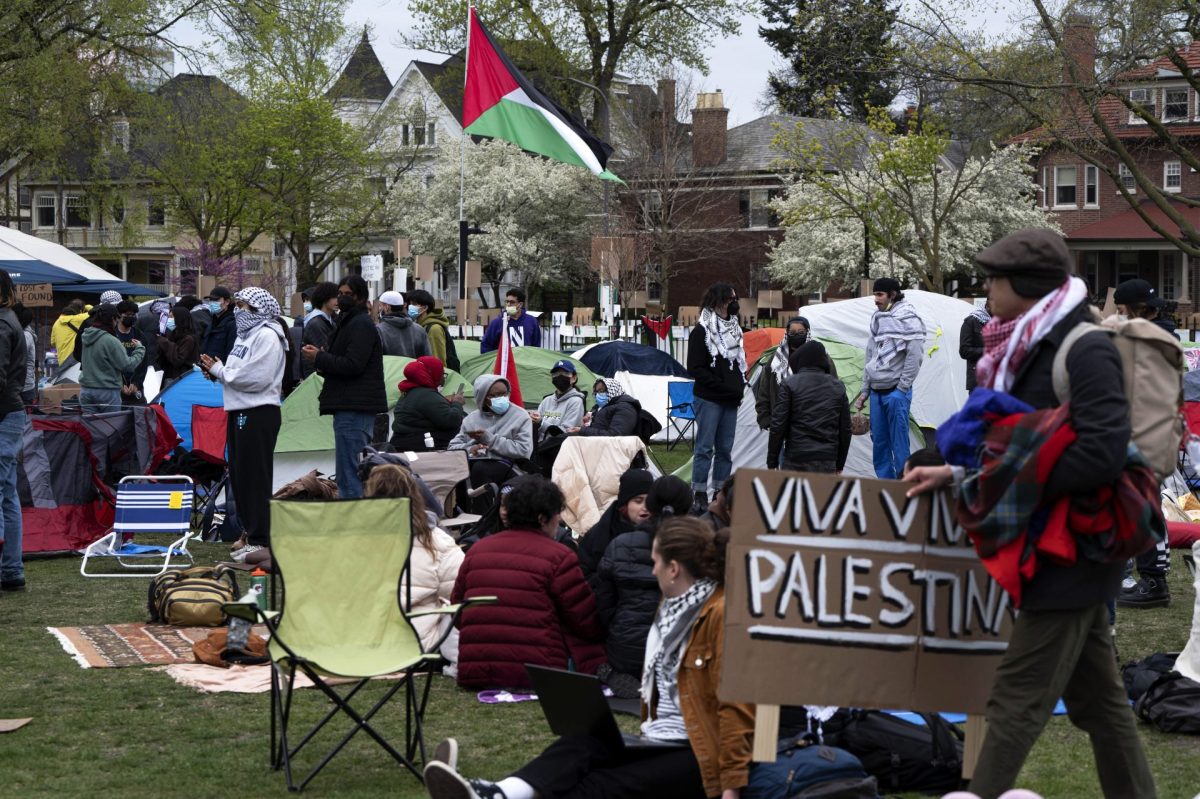Taylor Sebastian, a 19-year-old student at the Palm Bay Campus of Eastern Florida State College, was walking to class on the afternoon of Jan. 30 when she heard a fracas followed by a sound that she at first assumed was a “firecracker,” according to USA Today. Moments later, Sebastian also heard what the ominous subject line of an email from DePaul Public Safety issued the day before, “The Sound You Hope You Will Never Hear.”
“Gun, gun, he’s got a gun!”
After a spate of shootings on college campuses late last month that included this incident, DePaul Public Safety was compelled to refer faculty, staff and students to safety materials that have been developed to “provide training on how to remain safe in the event of acts of violence on campus.”
“With the recent shootings…we thought it was a good time to remind everybody,” Public Safety Director Bob Wachowski said. “People really need to prepare and say, ‘hey, this could happen here.'” The Targeted Violence Guidelines include instructions on navigating and even de-escalating potentially dangerous situations. Both the document and Wachowski advocate awareness and vigilance. “You have to have a plan,” he said. “Nobody, including the police or Public Safety, can walk you through everything.”
In addition to the guidelines, Public Safety also shared a safety video entitled: “Shots Fired On Campus,” which was made by the Center for Personal Protection and Safety (CPPS). Both of these resources articulate similar approaches to coping with and surviving active shooter incidents, including:
_㢠A combination of potential strategies referred to in the video as “get out, hide out or take out,” often colloquially called “run, hide, fight,” where individuals flee, hide from or directly confront the assailant depending on the situation. Public Safety’s guidelines do not explicitly endorse personal intervention, however.
_㢠Developing a survivalist mindset through preparation and attentiveness. As Wachowski said, “if you’re prepared, you’re more likely to survive the incident than if you’re going to be panicked.”
_㢠Aiding law enforcement intervention by any means, whether it be relaying necessary information or simply “remaining calm and (following) officer’s instructions,” as stated in Public Safety’s guidelines.
Lilli Gregory, a 20-year-old DePaul sophomore who works for University Housing Services as a residence hall desk receptionist, reviewed these materials and said that “it is important for every student and faculty member to do so also because it is important that everybody know what to do in a situation like that.”
Gregory also said that she generally feels “pretty safe on campus during the day. However, every time I see on the news that there has been another school shooting I do feel a bit uneasy.”
“Ominous trends”
The recent rash of campus shootings began at Purdue University in Indiana, with the Jan. 21st murder of 21-year-old senior Andrew Boldt, allegedly by 23-yearold undergraduate teaching assistant Cody Cousins. Cousins fatally shot and stabbed Boldt in a classroom, and nothing has yet been revealed about a possible motive for the crime, according to police reports. His former neighbor, Purdue senior Andrew Matyasovski told the Indianapolis Star that, “obviously something was wrong in (Cousins’) life. I don’t know what…I didn’t see any outward expression of that.”
Just days later, 19-year-old Justin Singleton was arrested and charged with the murder of 20-year-old student Brandon Robinson at South Carolina State University. The same week, a student was shot and critically injured at Widener University in Chester, Penn., in an act that university spokesman Dan Hanson said, “was not a random act of violence,” in a written press statement.
The following week, another nonfatal shooting at Eastern Florida State College occurred that was precipitated by a physical fight where the accused shooter was being beaten by two men, one of whom he would draw and use a firearm on. All three parties are claiming selfdefense in the case.
These incidents serve to highlight how gun violence does not always manifest itself as random and widespread, but in contained and situational instances as well. “It’s always something to be concerned about, because it is happening in society… [and] it’s happening more places than just on college campuses,” Wachowski said. “The media portrays it a lot more when it’s at a college campus …you have kids getting killed in the city of Chicago on a daily basis, and that doesn’t make news blurbs.”
According to Pew Research, the national firearm homicide rate was down 49 percent from its 1993 peak as recently as 2010. Similarly, an article featured in Time Magazine following last year’s Washington Navy Yard Shooting sought to disprove the notion of an “ominous trend” of mass shootings by pointing out that the rate of such incidents as defined by the FBI (one in which at least four people excluding the perpetrator are killed) has not significantly risen since 1980. Furthermore, the article pointed out that these shootings “make up a tiny fraction of homicides – usually less than one percent.”
A Feb. 3 Associated Press article views the stable rate of such shootings, particularly in schools, conversely. “The rate of school shootings is statistically unchanged since the mid-to late-1990s, yet still remains troubling.” Even in the aftermath of Sandy Hook and the ensuing emphasis on safety and security, trends continue unabated.
Proactive measures
Heightened safety concerns have been noted at other universities in the aftermath of recent events. In a Feb. 2t AP article, Indiana University’s emergency management similarly promoted the “run, hide, fight” strategy detailed in the materials shared by DePaul Public Safety, and stated that a “more comprehensive training tutorial for faculty is in the works.”
Currently, for DePaul faculty, “training regarding targeted violence is not mandatory,” Wachowski said. “Violent situations that have played out on college university campuses over the past several years have each been very different, and it would be almost impossible to provide training for the many variables or scenarios that could happen.”
Carolyn Hoerdemann, a current adjunct professor in Theatre Studies and DePaul alumna, stated that “this should be offered and possibly mandatory – it’s worth thinking about and spending some time with professionals in the matter.” Hoerdemann, who has been employed at DePaul for 10 years, said that she would be “willing to go to a training of this sort…this is all making me think I need to brush up on my safety procedures in the classroom.”
Assistant Professor and Undergraduate Journalism Director Lisa Pecot-Hebert said that her “students are my top priority; I am a teacher by trade and a protector by nature.” Pecot-Hebert also said that since “we have to take a mandatory online compliance training session every year, why not make a school violence safety training session mandatory as well? Some professors won’t like it…[but] why wait for something to happen before we take action?”
Despite the fact that faculty training for these situations is not required, Public Safety annually issues reminders to view their safety materials, and also conducts training sessions at the request of individual departments.
Lilli Gregory said that she was trained for “different procedures in different kinds of situations,” in her capacity as a residence hall desk receptionist. “It is important to make sure that nobody who is not supposed to be there gets in. This being said, I have asked people I was unsure about to wait outside the lobby for whoever they were waiting for. To me, it is better safe than sorry.”
In his three-decade career with DePaul Public Safety, the only incident involving a firearm on campus that Wachowski recalled dealing with involved a student with a licensed weapon in a residence hall.
“It was a legitimate firearm, but obviously they can’t have them on campus so the student was arrested.” Even with new laws allowing Illinois residents to apply for concealed carry permits, Wachowski said that DePaul will “remain a weapons free campus,” as evidenced by the “no firearms” signs that were conspicuously installed on campus buildings in December.
“We have a lot of resources that we use to deal with this stuff at the university, it’s very proactive,” Wachowski said. He meets weekly with other key faculty and staff members on the Student Care Team to assess any problems and immediate needs the University has, and he maintains an “excellent working relationship with local law enforcement,” where officers, supervisors and the Public Safety dispatch can directly contact police officers. Their network “includes the FBI, Homeland Security…if there’s any threats to college campuses, they’ll notify us,” he said.
University Counseling Services is also directly involved in such matters. While there has never been a specific threat of targeted violence at DePaul, students with mental health concerns have been identified and assisted by the department in the past, according to Director Jeff Lanfear.
“Several years ago, Student Affairs began a Student Advocacy and Welfare (SAW) initiative,” he said. “A major focus of [it] is helping faculty and staff recognize and refer distressed students to counseling and other advocacy services…here at DePaul, a strong sense of collaboration exists in which many university offices and programs come together to work as a team.”
Nevertheless, profiling those who might pose a danger to others is elusive and difficult. “The reality is that no two school shooters are alike and there is no accurate profile of the violent offender,” Lanfear said.
As Wachowski said, “the types of individuals, especially with the mass shootings, it’s kind of hard to see why some of them did it because none of them are here to interview. They always take their own life before the first law enforcement officer arrives, so there’s really no follow-up… they don’t want a confrontation with the police, they don’t want to be captured. You know, they have one mission: mass destruction, and that’s it.”
Shots Fired
In the unlikely but unfortunately possible event of a mass shooting on a DePaul campus, Wachowski said that the “Chicago Police will be here quickly, I mean you’re talking probably 1 to 3 minutes as a max. We have cars in the area all the time at both campuses, we have foot patrols at the downtown.” While CPD would assume control of the situation, DePaul Public Safety and facility staff would fill the assistance role by providing access to and intimate knowledge of university buildings. Also, depending on the scale of the event, other law enforcement agencies such as the FBI and ATF could be called in to assist.
Wachowksi’s recommendation to students is to “know your exits…that’s going to help you in anything.” He further stated that it would greatly benefit members of the university community to “watch the video, look at the tip sheet… [and] just kind of think through what you would do in that situation.” Public Safety’s guidelines also encourage students to be observant of others, and to report suspicious activity or individuals to the proper authorities.
Lilli Gregory said that while she has never felt uneasy around students or residents on campus, she is “always aware of what is going on around me…[but] I feel that should something horrific such as a shooting happen on or around campus, the authorities would be able to work together to help out.”
Carolyn Hoerdemann also said that she feels that “security is good at DePaul, especially in some of the newer buildings. I find I think about these events when they happen at other schools and wonder what I would do for a moment and then I put it out of my mind…I remember thinking how brave the teachers at Sandy Hook Elementary were – I hope that I could be as brave and smart in this type of situation, and of course I hope I don’t need to be put to this test.”







